QuestionQUESTION: I have had my baby sugar glider for six days. He eats and drinks but he does not play. He is so slow and quiet and not energetic at all. He will just stay in the same spot for a long time. He lets me pet him in his cage, but wont let me hold him. He tries to avoid being in my hands. I am just concerned because he doesnt like to play and seems sluggish. What's wrong with my baby.
ANSWER: How old is the glider? Are you around at night to see if he plays then? A young glider should be energetic at night. He has just left his family and is most likely lonely and scared. He would feel much better if he had a companion. What do you know about his diet before he came to you? What are you feeding him? When you answer all these questions, I will be better able to give you advice.
Here is my advice on bonding:
Taming Sugar Gliders will take a lot of time and patience. The objective is to convince them that you are not scary, and that having you around brings pleasure and nourishment. For now, get a pouch/purse to put them in, and wear the pouch next to your skin during the day when they are sleeping. You want to get them used to your scent. Don't try to handle them yet. Next, try holding them from OUTSIDE the pouch. Just cup them in your hands. They will probably fuss, but do not back down. Continue doing this until they no longer fuss. Get some licky treats such as applesauce or yogurt. Put some on your finger and put it at the opening of he pouch to see if they will lick it off your finger. The idea is to get them to trust you. When they are readily eating from your finger, start the next step: While they are sleeping in the pouch, put your hand INSIDE the pouch. Cup them as you did from the outside. At this point you may get some bites. They don't trust you yet. Don't back down. You don't want them to think they can get you to go away by biting. Keep doing this until they are comfortable with you holding them. Get some treats such as fruit or yogurt. While holding them, bring them part way out of the pouch to eat. Keep doing this until you have them completely out of the pouch. All this could take weeks or months. It took me four months to tame my first one. He was captive bred and still a baby.
Note: While you are taming your gliders, never chase them. Either coax them with treats, or just leave them alone. The best time to get them out of the cage is when they are sleeping in their pouch. If one gets out, try using a butterfly net or toss a towel over it to catch it. Again, don't chase. If it runs away, make sure the room is safe, close the door, and just wait. Remember, they can't swim. Make sure toilets are closed, aquariums are covered, etc. The glider will find a nice spot to sleep (usually up high). You can look for its sleeping spot during the day, or listen for it running around at night. Leave food and water out in a good location for the butterfly net. Be patient.
You can get a head start on taming babies. If the parents will let you, stroke them as soon as they are out of the pouch. Do NOT take the joeys from their mother. The joeys can be handled as soon as the parents leave them alone in the pouch. At that time you can hold them for short periods, extending the time each time. It would be best to keep your hand and the babies where the parents can see them. Parents, especially the mother, get upset when they don't know where the babies are.
Good luck.
Betty
---------- FOLLOW-UP ----------
QUESTION: I think he is about six to eight weeks old. The owner didnt tell me, and i didnt think about asking. No, i am not around at night but in the morning since after i posted this question, i have seen him get all excited when he sees me (now) because i bring him gerber apple sauce on my fingers. Before i got him, i read that he needs to be fed fresh fruits and vegetables, fresh water, a protein source (such as boiled eggs, meal worms, or crickets), and calcium sprinkled on his food (rep cal). Everyday i have been feeding him a different combination of the following:
Fresh water
Avocado
Honeydew melon
Cucumber
Apple
Pear
Crickets "cooked in their own juices" (which i dont think he likes; i think he prefers live ones)
Grapes
Spinach leaves
Yellow squash
Mango
Pelets (brand: sunseed)
and some other larger pelets that his owner gave me which have protein, crude fat, and fiber.
I also gave him a little bit of natural honey, hoping that it would get him going.
But after i posted this question, he is chubbier and friendlier.
ANSWER: Claudia,
Thanks for the information. Sugar Gliders are nocturnal. Mine don't wake up until about 10:00 pm. To see how active yours is, you need to see how he is when he is totally awake.
You glider may have been a little young to be separated from his parents. He is probably suffering from some separation anxiety. Yes, he will be much happier with a companion. Gliders are social and normally live in a colony of 6-15 individuals. Human companionship is helpful, but doesn't really substitute for companionship of his own kind. Your problem, however will be that two unrelated males will not get along, and if you get a female, they will mate.
Your diet sounds pretty good. Do NOT feed him avocado. I'm not sure about the pellets. Are they dry, or semi-moist? Zookeepers Secret is the best. You can find it on sugar-gliders.com. Have you heard of BML? This formula is very good for gliders, and should be supplemented with fresh fruits, veggies, and meal worms, crickets, etc.
Good Luck, let me know how things are going.
Betty
---------- FOLLOW-UP ----------
QUESTION: Is avocado bad? That's scary because he LOVES it. The pellets are dry. The ones his owner gave me have some moisture to them. Doesnt zookeepers secret have by-products,salt and leftover parts of meats that arent good for my suggie? Is BML a homemade thing?
AnswerHi,
You've done your research. There are many opinions about the best diet for Sugar Gliders. Of course, we want to replicate their natural diet as closely as possible. If you can be consistent with the diet you mentioned, I'm sure your gliders will be healthy and happy. For most glider owners, however, it is too difficult to provide a good balance of fresh foods daily. They look for a staple food that can be made and/or purchased. Here is a quote from the Internet about Zookeeper's Secret:
{Some of the things gliders eat(or any animal for that fact) can not just be bagged or canned and sold to the public as food for many reasons. Live things die, some things can't be imported to U.S., & some we probably don't even know about. Scientists that make this stuff do their best to mimic a diet that they get in the wild as closely as they can, but some additives have to be used to keep the food fresh and from spoiling. Some of the ingredients fit as close as they can get to the natural diet as the FDA will allow. We as glider owners accepted these things when we chose to have gliders as pets. Bottom line, there is no perfect food. Many people use Zookeepers with great results and as they say, "Results speak for themselves!"}
Dry pellets can be rough on the gliders' gums, and should be softened with water or juice.
Avocado is high in fat and contains toxins known as cardiac glycosides.
BML is a recipe that is made at home. Again, it is not perfect, but has a balance of nutrients proven to be beneficial for gliders. I hope this helps. Please keep in touch.
Betty

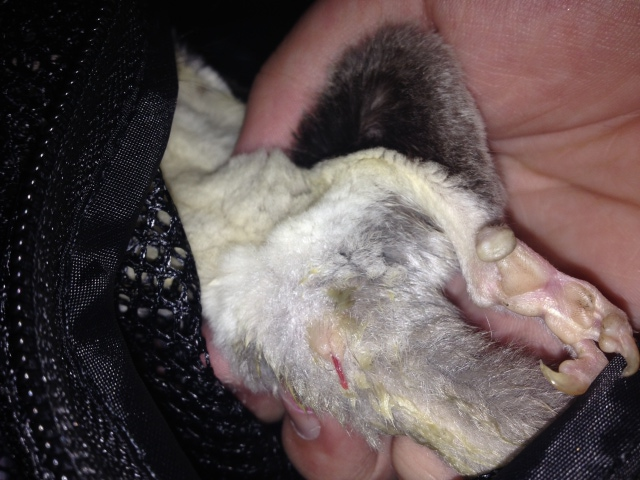 Puberty
Question
His genitalia Wont eat
I got two
Puberty
Question
His genitalia Wont eat
I got two
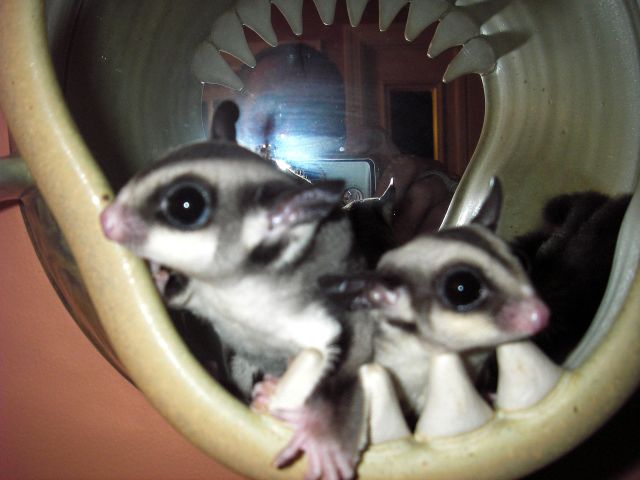 Joeys
Questionsampson and delilah
QUESTION: Hi,
Unfort
Joeys
Questionsampson and delilah
QUESTION: Hi,
Unfort
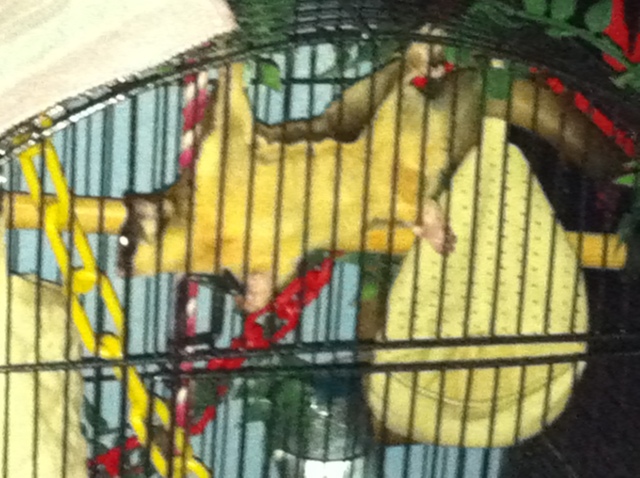 Not sure whether is my suggies are growing well compared to the new glider size
Question
Glider KK
Hi Kaden, im jeremy, just started to
Not sure whether is my suggies are growing well compared to the new glider size
Question
Glider KK
Hi Kaden, im jeremy, just started to
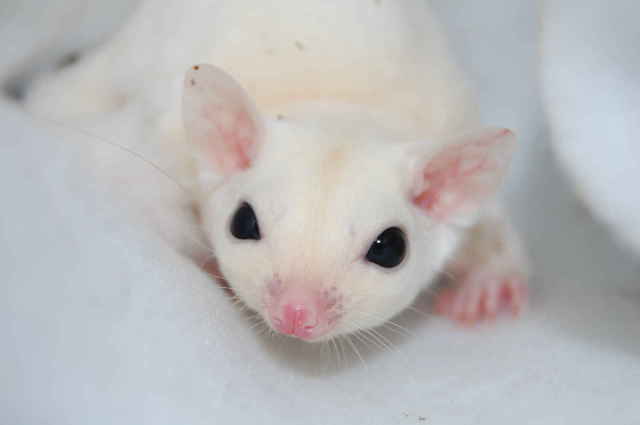 Does Sugar Gliders will effect our health?
QuestionHi Kaden,
I would like to know if sugar glider
Does Sugar Gliders will effect our health?
QuestionHi Kaden,
I would like to know if sugar glider
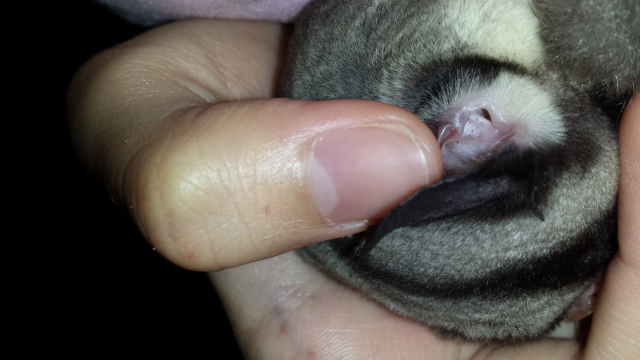 sugar glider ear mites?
Question
ear ear
hi.
can I know how does e
sugar glider ear mites?
Question
ear ear
hi.
can I know how does e